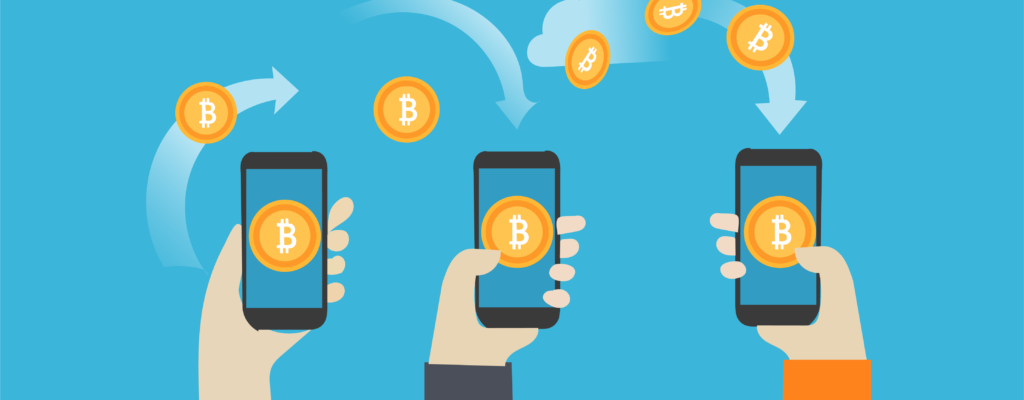
An Introduction to DAPP | A Guide to Open-Source Software
Dapp stands for Decentralised application, which is an open-source software platform that runs on a distributed computing system & has been familiarized by distributed ledger technologies (DLT) such as Ethereum DAPP, where Dapps are often cited as smart contracts.
These are inflamed using tokens that are spawned using certain protocols/algorithms. Roofing over a peer-to-peer network (blockchain).
It acts as a kind of operating system, which creates innovative open-source software environs that are both secure &volatile and allows developers to create new online tools.
In subsequent days best Dapps are believed to be potent enough to pool resources across umpteen machines globally.
To be noted that, Ethereum was the major budding Blockchain-based platform to create the complete language for writing smart contracts and gradually was also found a suitable platform for Dapp development.
In the count of 100 Decentralised applications, 91 are platformed on Ethereum.
Characteristics of Dapps
Adhering to the concept of blockchain technology Dapps are organically associated with the following framework which are the core executive elements of the application:
Open Source:
Being running on the blockchain technology makes Dapps ideally autonomous and robust, the users can identify and control the codes in exchange for generated tokens.
Tokens: These are the economic values in the crypto ecosystem which are used to interact with Dapp by enabling purchase in the form of tokens.
Codes: A Dapp consists of front-end code that further ensures interaction with the user interface and calls to the backend.
Protocol: The virtual regulatory architecture that is based on a certain cryptographic algorithm to derive a required proof of value. For instance let’s say, Bitcoin uses Proof of Work (PoW) whereas Ethereum is currently using PoW with plans towards hybrid POW i.e. Proof of stake 5(PoS) in the future.
Programming Languages for Dapps Development:
The standard language for programming Dapps on Ethereum is Solidity, despite its widespread usage; it has many loopholes adhering to its language design.
Thus, several upcoming programming languages are expected to be created to serve as its best alternative is Vyper, which is an experimental language that is believed to be simpler, secure, and auditable that can ensure human readability to the codes is an experimental language that is much simpler than Solidity.
Vyper increases security, simplicity, and audit ability by making code as human-readable but only if it can support basic essential points. Another perspective language for Ethereum is Simplicity, belonging to the group of functional languages ((Haskell, Clojure, Lisp, OCaml, etc.).
Which can address issues of Solidity such as avoidance of service denial by assessing and statically analyzing resource costs, reducing hacks by effective use of Coq, a verification tool and adding more privacy elements?
The language used by another Dapp domain Tezos is Liquidity to program smart contracts. Keeping in mind the security concerns associate with Ethereum Dapps, the functional languages might dominate the Dapps’ ecosystem.
Why Dapps?
Inarguably, Dapps are in making to unbind the manifold array of technical cases and faces by enabling access to significant pros attached to it.
Security: The association of advanced security with the blockchain technology gets reflected on the Dapps too, where data is distributed over all nodes in the network and transactions are streamed permanently. Thus, eliminating interference and providing better security.
Data Transparency: The storage of data on multiple systems unitedly provides better accessibility to the users on the distributed network banishing the falsification in data recording and erasing.
Financial Efficiency: The elimination of middlemen and end to end-user interaction in the process reduces dependency on financial institutions. Dapps are repellent to downtime and outrages. Thus provides better financial autonomy and speed.
Note: Miners are given a bounty to tokens when they successfully endow to the crypto ecosystem.
Application of Dapps:
The crux is that Dapps are versatile applications that can be built adhering to or with blockchain technology and related algorithm.
So far Dapps are gaining significant regard and acceptance with the plans of showcasing far-reaching impacts on the ecosystem Here are some of the most exciting things people are doing with decentralization today.
1) Using Smart contracts to disperse funds.
2) Maintenance of property deeds.
3) Execution at voting and governance system.
4) Ensuring crowd selling of goods.
5) To gamble with instant payouts.
6) Application at digital asset management etc.
Thus, the concept of Dapps is being applied and executed at every major autonomous management and organizing industry.
Conclusion
The landscape painted by Dapp is evidently evolving by providing a more secure, distributed, versatile, and resourceful platform to enable a full-fledged digital revolution. It is best suited to look beyond the traditional scenarios of payments, cloud computing, storage, etc.
It aims to provide new far-reaching functionalities and use cases for blockchain technology. Thus, numerous efforts are underway to make this digitalization trigger the planet in a potentially appreciated way



